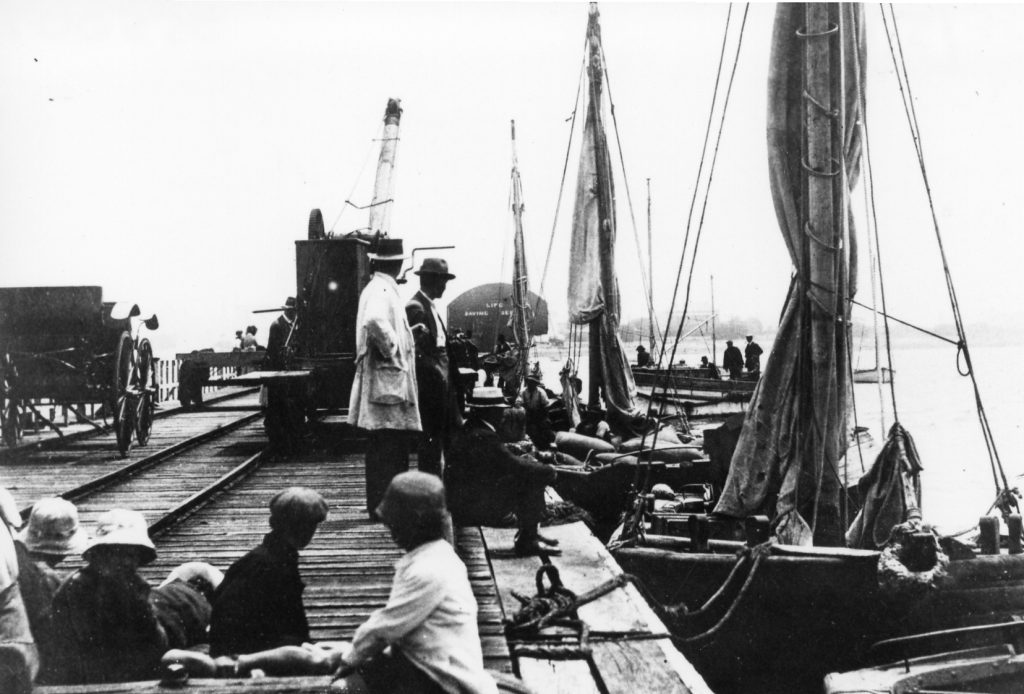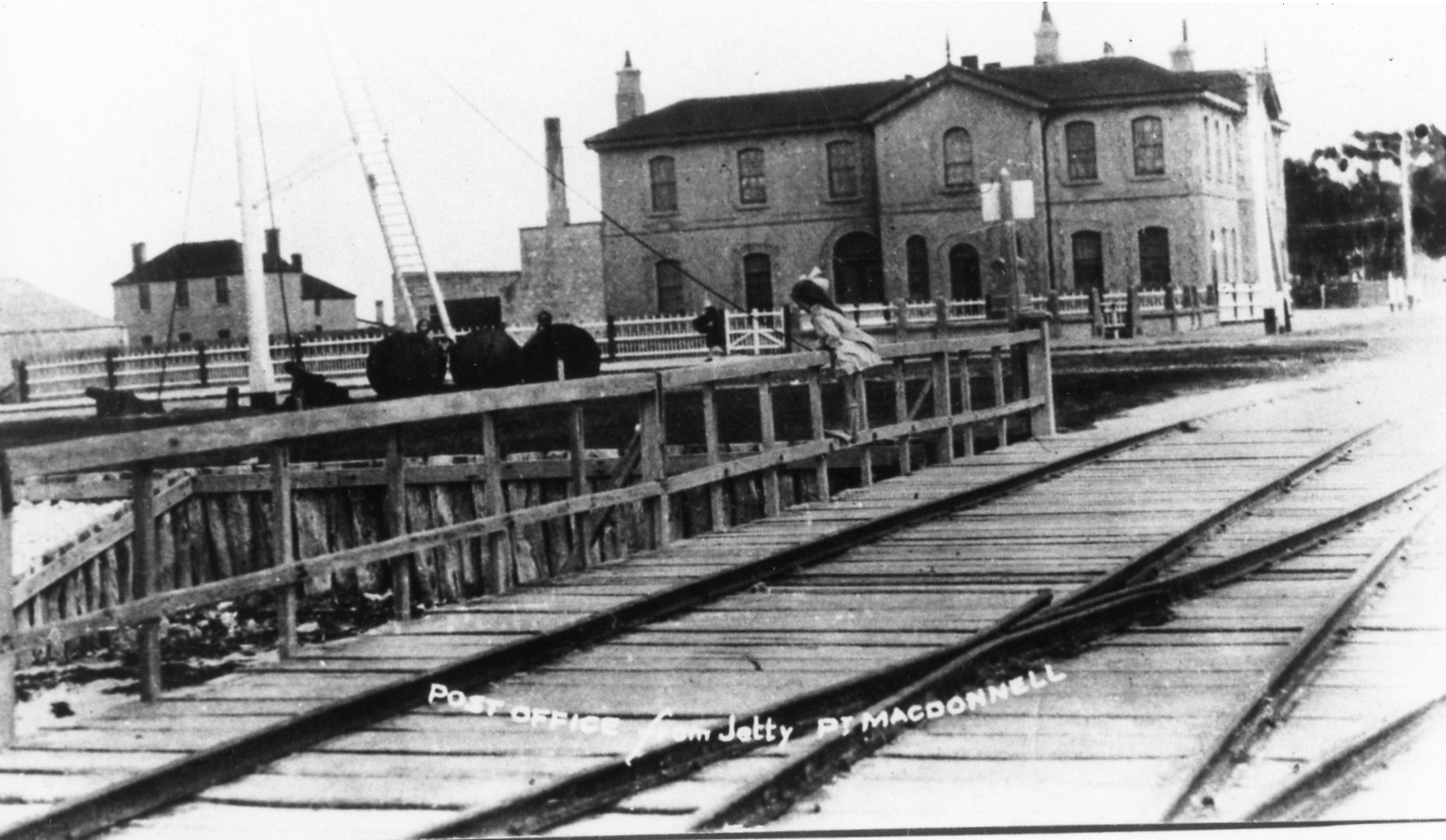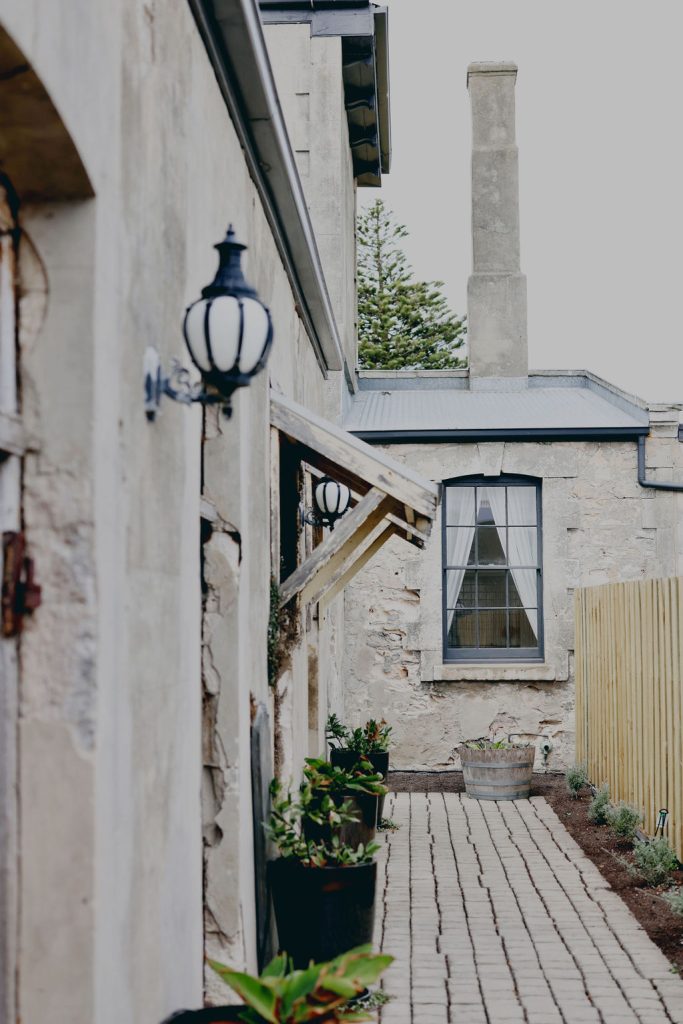
Overland freight for supplies before the advent of railways was expensive and dangerous, and sea freight was a cheaper, faster way to develop the inland regions. Small ships, ketches and schooners landed goods on the beaches, but the growing number of wrecks along this treacherous stretch of coast led to demands for a lighthouse.
The ships bringing fittings for the Cape Northumberland lighthouse were the first officially recorded vessels into MacDonnell Bay in 1856. The lighthouse keeper, Ben Germein, was commissioned to survey the bay and select a site for a port. He marked a safe channel to anchorages protected by Cape Northumberland and Breakers Reef, and Port MacDonnell was officially declared a port on 4 April 1860.
Construction of the Customs House began in 1862, and was completed the following year by Mr. Francis Reynolds for £2605. Designed by Colonial Architect William Hanson, it was the only one of its kind and size in South Australia, indicating a fierce confidence in the development of Port MacDonnell as a significant port facility.
The magnificent building housed the Customs Office, Harbour Master, Court House, Magistrate’s Office, Post Office, Telegraph Office and Police Station, with lodgings for the policeman, postmaster and school teacher. Prison cells and stables were constructed at the rear of the building. Following its completion, Captain Edward French opened a shipping agency and warehouses. Port MacDonnell began to prosper and in three months to June 1864, goods worth £27,000 moved through the port.
Passengers also set sail from these southerly shores, with a young woman named Mary Mackillop among them. On a chilly winter’s day in June 1867, she boarded the steamship SS Penola at Port MacDonnell for an overnight passage to Adelaide to help set up a revolutionary new system of Catholic education. It was a watershed moment on her journey to becoming Australia’s first and only saint.
In the 1870s Port MacDonnell reached its heyday, with customs revenue second only to Port Adelaide. From 1876-1879, exports totalled £604,946 and imports £263,961. Large ships sailing directly to England loaded wheat and wool; ketches and schooners brought in supplies and loaded smaller cargoes, notably potatoes, flour, wattle bark (for tanning), hay, hides and tallow. Shipwrecks continued along this treacherous stretch of coastline, keeping the brave lifeboat crew busy.
The 1880s saw a noticeable downturn in trade, for cheap rail rates provided stiff competition for the shipping lines. The residents of Port MacDonnell had rejected the notion of a tramway or railway since the mid-1860s. A railway to Kingston from Naracoorte was opened in 1876; in 1879 a line was built to Beachport and in 1883 to Bordertown, with the final connection to Adelaide in 1887. When finally a rail line was opened between Mount Gambier and Portland in 1917, the tides turned at the once-bustling port of Port MacDonnell.
The Customs House stands as a reminder of a busy trading port in years gone by, capturing the hearts and imagination of generations.
Construction of the Customs House began in 1862, and was completed the following year by Mr. Francis Reynolds for £2605. Designed by Colonial Architect William Hanson, it was the only one of its kind and size in South Australia, indicating a fierce confidence in the development of Port MacDonnell as a significant port facility.
The magnificent building housed the Customs Office, Harbour Master, Court House, Magistrate’s Office, Post Office, Telegraph Office and Police Station, with lodgings for the policeman, postmaster and school teacher. Prison cells and stables were constructed at the rear of the building. Following its completion, Captain Edward French opened a shipping agency and warehouses. Port MacDonnell began to prosper and in three months to June 1864, goods worth £27,000 moved through the port.
Passengers also set sail from these southerly shores, with a young woman named Mary Mackillop among them. On a chilly winter’s day in June 1867, she boarded the steamship SS Penola at Port MacDonnell for an overnight passage to Adelaide to help set up a revolutionary new system of Catholic education. It was a watershed moment on her journey to becoming Australia’s first and only saint.
In the 1870s Port MacDonnell reached its heyday, with customs revenue second only to Port Adelaide. From 1876-1879, exports totalled £604,946 and imports £263,961. Large ships sailing directly to England loaded wheat and wool; ketches and schooners brought in supplies and loaded smaller cargoes, notably potatoes, flour, wattle bark (for tanning), hay, hides and tallow. Shipwrecks continued along this treacherous stretch of coastline, keeping the brave lifeboat crew busy.
The 1880s saw a noticeable downturn in trade, for cheap rail rates provided stiff competition for the shipping lines. The residents of Port MacDonnell had rejected the notion of a tramway or railway since the mid-1860s. A railway to Kingston from Naracoorte was opened in 1876; in 1879 a line was built to Beachport and in 1883 to Bordertown, with the final connection to Adelaide in 1887. When finally a rail line was opened between Mount Gambier and Portland in 1917, the tides turned at the once-bustling port of Port MacDonnell.
The Customs House stands as a reminder of a busy trading port in years gone by, capturing the hearts and imagination of generations.

Plan a seaside soirée in our incredible indoor and outdoor spaces, or stay in your own self-contained 2BR or 3BR two-storey apartment inside this heritage-listed oceanfront mansion steeped in maritime history. Book your stay directly through our website for the best available price.

We found everything we needed to make our stay most comfortable…you have thought of everything!

Loved the central location. Walking distance to everything. Beautiful building and amazing, friendly hosts.

What can we say except wow!

Beautiful place, we love it here!
